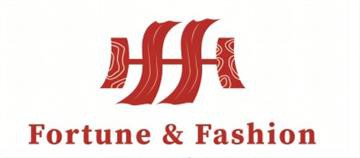How many types of printing processes are there?
Sep 07, 2023
The digital printing process can be divided into the following types:
1. Digital direct injection engine printing
The digital direct injection engine printing method can be used for dispersing, acidic dyes, building coatings, and reactive inks. The digital direct injection engine printing method is the entire process of immediately printing on semi-finished processed textile fabrics that have been sized. The entire processing process involves selecting the corresponding ink based on the textile product, carrying out design schemes, de-sizing, and then immediately printing at the textile direct injection engine printing machine, Subsequently, the drying treatment, steaming, water cleaning, drying treatment, and softening and shaping processes are completed.

2. Heat transfer printing is the process of printing textile dyes onto paper, and then using heat transfer printing machinery to transfer the pattern design on the paper to the textile product. The advantage is that the precision is very high, but the printing efficiency is low. Only textile products with high polyester or polyester content can be made.
3. Circular screen printing uses cylindrical nickel skin stainless steel mesh with hollow patterns, which is assembled on the edge of the repeatedly operated vulcanized rubber guide belt in a certain order. The pearlescent powder is keyed into the mesh and stays on the bottom mesh. When the circular mesh rotates with the guide belt, the scraper that is clamped on the bottom mesh generates relative scraping pressure with the flower mesh. Pearlescent powder reaches the surface of the fabric through the pattern on the mesh.
4. The flat screen printing mold is a polyester cloth or cotton stainless steel mesh (patterned plate) fixed on a square frame and with a hollow pattern. The patterns on the pattern can pass through pearlescent powder, while the areas without patterns are sealed with a polymer film layer of mesh. When printing, the pattern plate compresses the fabric tightly, and the pattern plate is filled with pearl powder. A scraper is used to repeatedly scrape and press the pearl powder to reach the surface of the fabric through the pattern. The economic benefits of flat screen printing production and manufacturing are low, but it has a wide adaptability, flexible application, and is suitable for small-scale and multi-category production and manufacturing.
5. Water-soluble printing paste, soluble water, and the sauce itself are relatively thin. When packaging and printing, the printing slurry is evenly and odorlessly leaked to the necessary printing position according to the mesh of the screen printing screen so that the pattern design can be printed on the T-shirt.
6. The processing technology of adhesive printing is basically the same as that of water slurry printing. The only raw material used is the adhesive color paste that will coagulate on the fabric after drying, which feels a bit like a patch tightly against the skin. At present, the most common printed T-shirts in the market mostly use adhesive printing.
7. Flocking fabric printing
Flocking fabric is a highly demanding processing technique that only a few factories can do well, and most factories do not have such a processing technique Flocking cloth, also known as soft-bristled toothbrush flower, is famous for its practical effect, which is like soft-bristled toothbrush whiskers standing up one by one. The height-to-width ratio of the finished product can reach up to 0.3CM, and it can be used for other colors on top, so it is also known as flocking cloth.
8. Pigment print, also known as architectural pigment printing, is a nonaqueous dyeing chemical that has no infective effect on chemical fibers. Its color application relies on the encapsulation of polymer material chemicals (adhesives) that can be coated on the film and the adhesion effect on chemical fibers. Color paste printing can be used for the production and processing of all chemical fiber textile fabrics, and has advantages in the printing of blended fabrics and interwoven fabrics. The technology is simple, the chromatograph is relatively wide, and the pattern lines are clear, but the touch is poor, and the color fastness to rubbing is not high.
9. Discharge printing uses dyes that are not resistant to discharge agents to dye the ground color. After drying treatment, pattern dyes with discharge agents or other resistant discharge agents are used to print the paste. During the post-treatment process, the ground color dyes at the printing site are damaged and overlapped, resulting in milky white lines on the color ground or colorful lines caused by pattern dyes. Also known as whitening or color extraction. Can it create the actual effect of clothes and pants being washed and blanched? The color tone of the clothes and pants seems to have been washed a lot, mottled~~In fact, this is also a pull-out printing. The basic principle of pull-out printing is to extract the color tone of the chemical fibers in the fabric structure, making it into another lighter color tone, which is stronger than the actual effect of washing. It is a cool and dazzling print for casual men's clothing!







